
Author: Thusitha Nimalsiri, Geoscientist
Extract from National Rock Garden Newsletter No. 21, June 2021
During March, I was provided with a tour of the National Rock Garden’s Federation Rocks by NRG director Mr Mike Smith. I found the large specimens to be very diverse, demonstrating a wide range of geological evolution from river sands to chemical sediments, volcanic lavas to crystalline igneous rocks, with polished faces being very effective in displaying the detailed texture of the mineral assemblages.
The Federation Rocks, representing each of Australia’s states and territories, are now complemented by three more igneous rocks, a tonalite, a microsyenite and a norite. These names might reinforce the common concept that geologists speak a strange language of their own. However, each of these newer rocks all have a good story: representing the pylons of the Sydney Harbour Bridge, the columns of Queen Victoria Building and beautiful sculptures and gravestones.
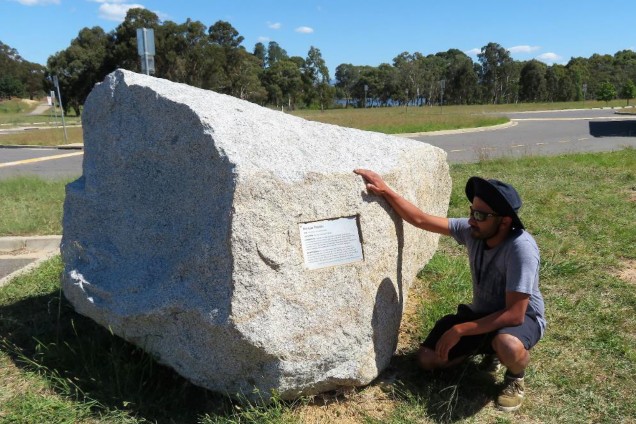
I was a little surprised when Mike led me across a broad paddock, with the warning ‘Watch out for snakes’. We traversed the long grass without incident and arrived at what was described as the storage area of the Rock Garden. There was a rather strange white rock and some vaguely familiar brown rocks.
The white rock was a rhyolite from Bulahdelah in NSW, a volcanic formation that had experienced severe invasion by hot fluids, which flooded the original volcanic material with a sulphate mineral called alunite.
Mike was especially keen to praise the NRG’s two brown rocks. He told me that these two six and seven tonne specimens are charnockite which we have brought to the Australian Capital Territory all the way from Antarctica! He said ‘These rocks are very rare, so we are delighted to have them in the National Rock Garden’.
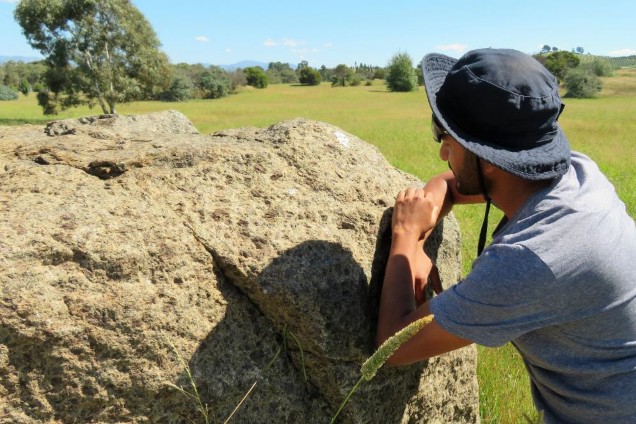
I said to Mike ‘I know this rock – it is very common in my home country of Sri Lanka, which has a basement made up of high-grade metamorphic rocks of Proterozoic age’.
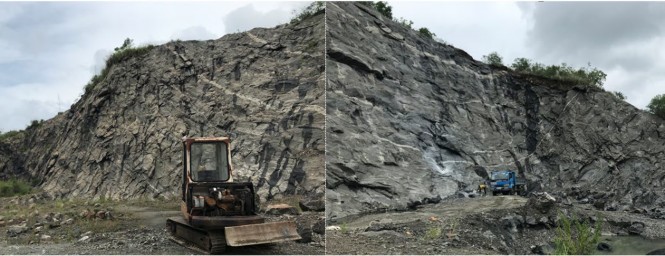
Sri Lanka has a central spine called the Highland Complex, which is shown in light green in the geological map below. This elevated region is the largest unit of Sri Lanka and forms the backbone of the Precambrian rocks. In fact, more than 90% of the rock units found in Sri Lanka are crystalline metamorphic rocks of Precambrian age (Sumanarthna, 2020). These rocks have experienced high temperatures and high pressures resulting in part in the generation of charnockite rocks.
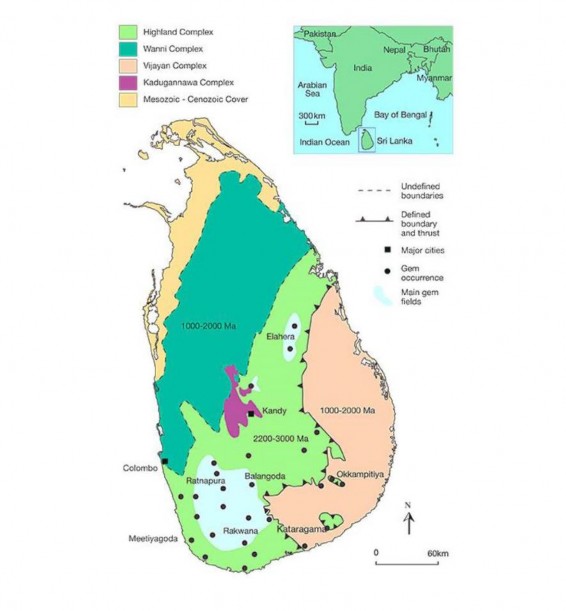
Readers may ask ‘What is the relationship between the NRG charnockite rocks from Antarctica and my charnockite rocks in Sri Lanka?’ and that is an excellent question, which takes us to the story of Gondwana.
Gondwana was a supercontinent that existed from the Neoproterozoic Era (more than 540 million years ago) which contained portions of the land areas we are familiar with today as Antarctica, Australia, India (plus Sri Lanka), Africa, and South America. It was formed by the accretion (joining together) of several cratons (old and stable parts of Earth’s two topmost layers, the crust and the uppermost mantle.).
Eventually, Gondwana became the largest piece of continental crust of the Paleozoic Era, covering an area of about 100,000,000 km2 about one-fifth of the Earth’s surface.
A useful depiction of a reconstruction of Antarctica, India, Sri Lanka and Madagascar at approximately 240 million years ago is presented in Figure 8 of the technical paper by Ratheesh-Kumar et al (2020).
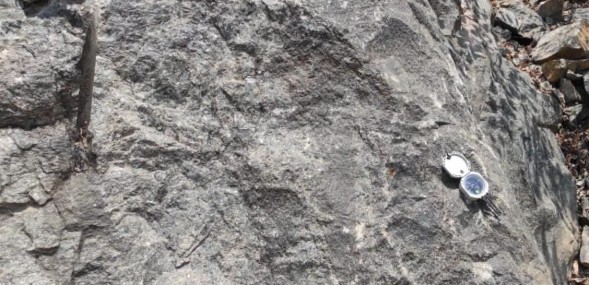
The break-up of Gondwana initiated at about 180 million years ago (during the Jurassic Period) when the western half of Gondwana (Africa and South America) separated from the eastern half (Madagascar, India, Australia, and Antarctica). The South Atlantic Ocean opened about 140 million years ago as Africa separated from South America. Geologic research has demonstrated that examples of spectacular occurrences of charnockite occur in crustal segments of East Gondwana (comprising India, Sri Lanka and Antarctica). The available geochronologic (geological dating) studies indicate multiple events of charnockite formation at ∼2500, 1000, and 500 Ma in these crustal domains. All of these times of charnockite formation are before the breakup of Gondwana (starting at 180Ma).
This means that the occurrences of charnockite in Sri Lanka and Antarctica, though vastly separated now, were once part of the same geological terrain, and that they were actually joined up as large swathes of similar rocks.
About the Author
Thusitha Nimalsiri completed a B.Sc. degree in Geology at the University of Peradeniya, in his home country of Sri Lanka, where he also received a M.Phil. degree from the University of Peradeniya. The awarding of an International Research Scholarship enabled Thusitha to undertake a PhD program at Macquarie University during December 2016 to December 2019. He is currently employed in geotechnical engineering, based in Bathurst NSW.
References
Ratheesh-Kumar, R. T., Dharmapriya, P. L., Windley, B. F., Xiao, W. J., & Jeevan, U. (2020). The tectonic ‘umbilical cord’ linking India and Sri Lanka and the tale of their failed rift. Journal of Geophysical Research: Solid Earth, 125, e2019JB018225. https://doi.org/10.1029/2019JB018225
Sumanarathna, A. R., 2020. Geology of Sri Lanka. https://www.researchgate.net/profile/Aravinda- Sumanarathna/publication/340226752_Geology_of_Sri_Lanka/links/5e7de49692851caef4a22728/Geology-of-Sri- Lanka.pdf
For more about the Gondwana connection between Sri Lanka, Antarctica, Madagascar and India, all having charnockites related to the same tectonic event, see these papers:
Leo M. Kriegsman, L. M. (1995). The Pan-African event in East Antarctica: a view from Sri Lanka and the Mozambique Belt. Precambrian Research, 75(3–4), 263-277. https://doi.org/10.1016/0301-9268(95)80010-F
Yoshida, M., & Santosh, M. (1994). A tectonic perspective of incipient charnockites in East Gondwana. Precambrian Research, 66(1–4), 379-392. https://doi.org/10.1016/0301-9268(94)90059-0
Dissanayake, C., & Chandrajith, R. (1999). Sri Lanka—Madagascar Gondwana Linkage: Evidence for a Pan- African Mineral Belt. The Journal of Geology, 107(2), 223-235. https://doi.org/10.1086/314342


